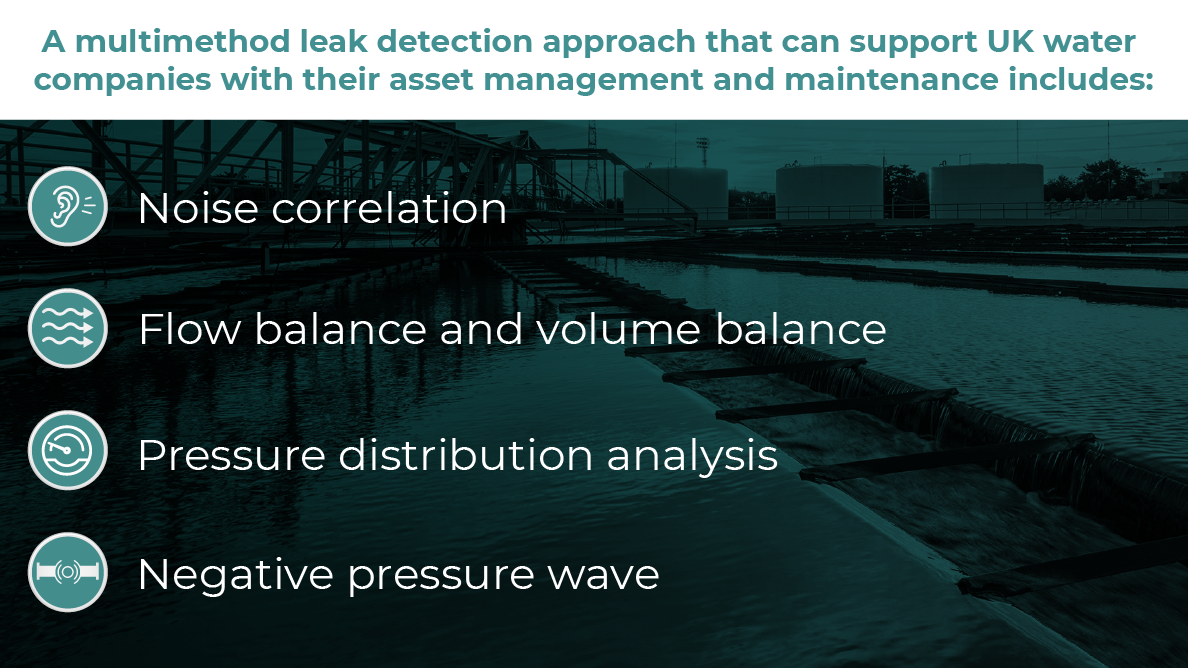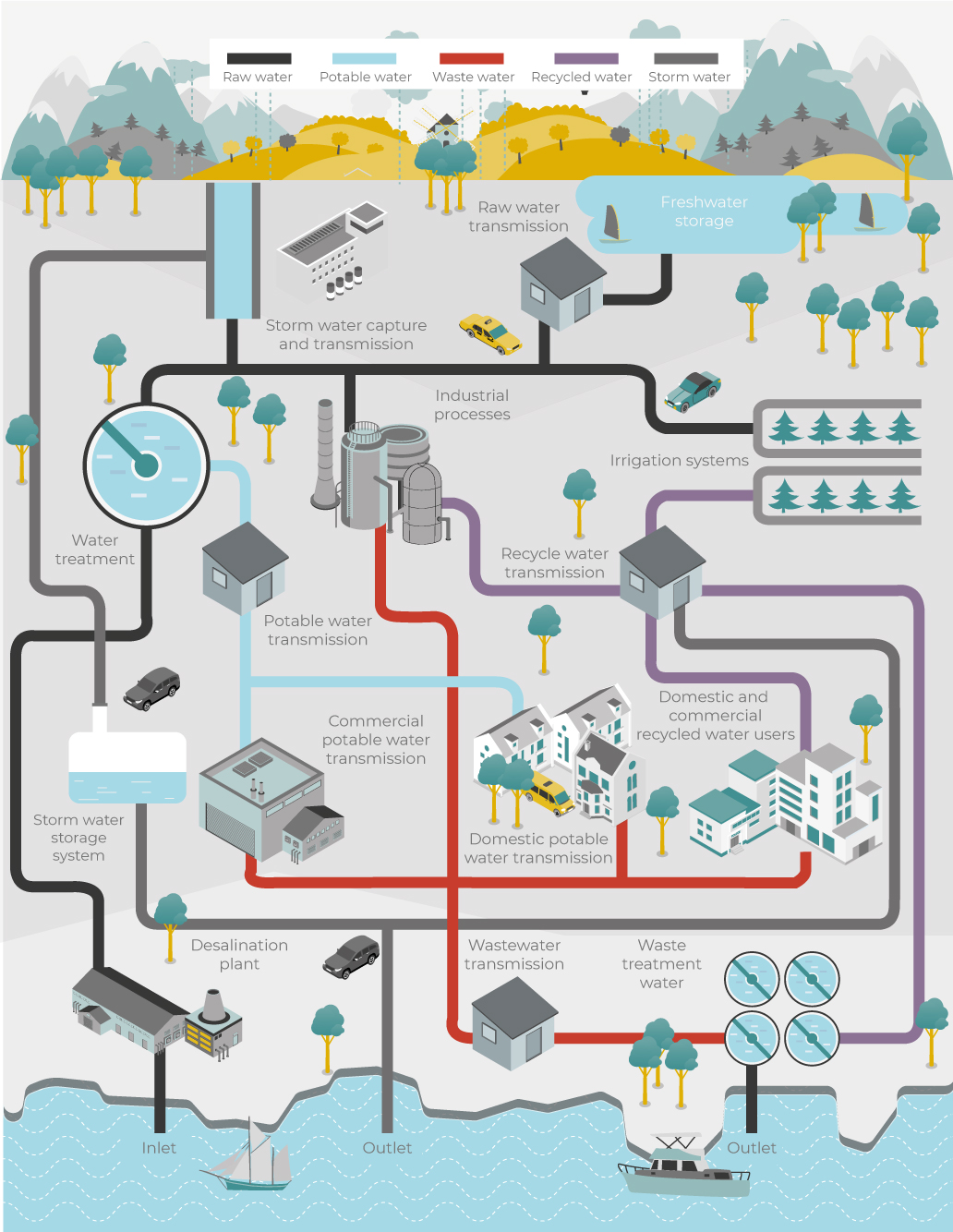
From raw and potable water networks to irrigation systems, industrial zones and urban areas, the transportation of water in pipelines is the backbone of a functioning water system network.
Pipelines are the most essential method of transporting water, yet typically aren’t recognized as assets and so aren’t considered in asset maintenance programs. Additionally, large portions of the UK water pipeline network are aging, buried underground and prone to leaking, providing the possibility for new leaks to escalate into existing leaks and existing leaks to become ruptures.
Leakage anywhere in a water pipeline network has the potential to cause disruption to water supply, but leakage in trunk mains could have a significant impact on a large number of customers.
This article discusses current efforts at maintaining trunk mains pipeline integrity in the UK and how a multimethod leak detection approach is integral to an effective and proactive asset maintenance program.
Reviewing current trunk mains pipeline maintenance strategies
Trunk mains don’t typically feature in asset maintenance programs but instead are subject to active leak control methods. The leak detection methods deployed along trunk mains can be categorized as follows:
External methods
To determine if there’s a threat to a water pipeline’s integrity, line walks are a common element of maintenance strategies. However, as the entire water pipeline network is typically buried underground, line walks may fail to identify leakage and (worsening) pipeline integrity, particularly if a leak hasn’t impacted the surrounding area yet.
Internal methods
Continued investment in technological advances like artificial intelligence (AI), internet of things (IoT) and big data has led to robotics being proposed as the solution to water pipeline inspection. These robots typically use camera, ultrasound and leak detection techniques to perform pipeline condition assessments but are designed as a survey tool rather than a permanent monitoring tool, reducing the ability to alarm on new leaks occurring after the survey.
Pipeline repair and replacement
Once leakage has been identified or pipeline integrity is compromised, water utilities repair or replace those pipeline sections at a high cost. This can cause considerable disruption to the distribution network and be difficult to achieve in the context of water pipelines which are typically located underground.
The most effective asset management and maintenance program
A multimethod approach to leak detection
Failure to routinely manage and maintain UK water pipelines can lead to leakage, spills and ruptures, impacts on customer water supply, damage to high consequence areas and fines and clean-up costs.
In isolation, internal methods, external methods and pipeline repair or replacement aren’t enough to sustain a water pipeline’s integrity as part of an asset maintenance program.
A multimethod leak detection system is a vital component of an asset management and maintenance program and can support water utilities in mitigating water supply interruptions across a network.
Noise correlation
Using the speed of sound in the pipe wall, correlators using acoustic sensors can determine if there is a leak between two measurable points. Also known as acoustic sensing, noise correlation focuses primarily on existing leakage. However, a wide range of background noises can occur inside or around a water pipeline which can confuse the data analysis, but using noise correlation methods alongside flow balance and volume balance can validate leakage events and reduce false alarms.
Flow balance and volume balance
Flow meters compare inlet and outlet flows to identify discrepancies. This approach is the most popular leak detection method because it’s versatile and detects leaks in all operational conditions including steady state and transients. Atmos has combined intelligent flow balance with pattern recognition to detect leaks reliably.
Pressure distribution analysis
Using data from leak detection hardware in the pipeline network, pressure distribution analysis can look for pressure deviations. This method can monitor shorter pipelines and reduce the amount of “false positives” while improving reliability.
Negative pressure wave
Newly forming leaks on a pipeline generate a negative pressure wave which propagates in both directions along the pipeline. Using a high data acquisition rate (commonly at 60 Hz), the negative pressure wave method can quickly alarm on a new leak and determine its location accurately.
Pipeline leak detection is asset management
Given how critical pipelines are for the success of ensuring water supply throughout the network, it’s crucial they are treated as assets and therefore are included in an asset maintenance program which includes a multimethod approach to leak detection.




